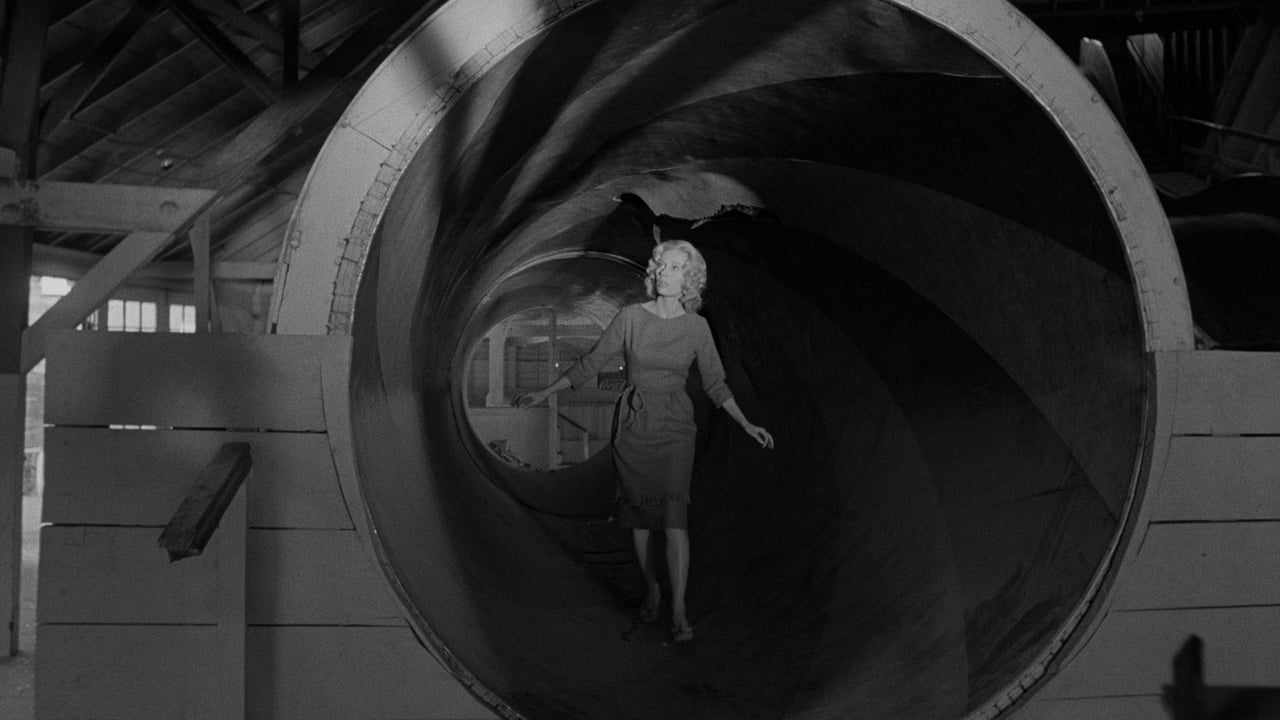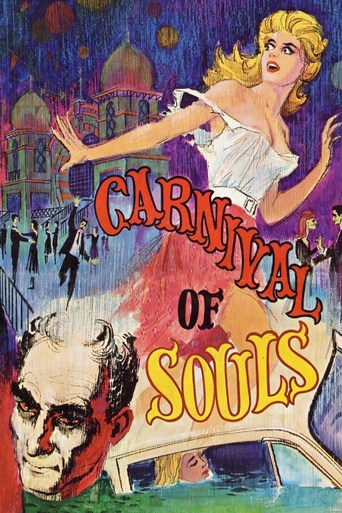

Poor acting, awful script yet I watched it to the end, so bad its good.....sort of
... View MoreSpoiler alert! If you haven't seen this film and don't want the end spoiled for you, don't read this review. I found it impossible to write a review for this film without spoiling the ending.I am surprised by the number of reviewers who totally ignored the ending, which, for me, revealed all that had transpired before it. In my view, Mary had reached the point where life meets death. In our "living" time, the action following the accident on the bridge was perhaps 60 or 70 minutes, but for Mary, who had reached the point where life meets death, it could have been an instant or an eternity as there is no similar dimension of time during or after death. As she was a victim of drowning, the haunted Saltair Pavilion on Salt Lake was significant to her watery end, as were the "souls" who appeared from the water and from unknown, undefined realms beyond the living.For me, all that transpired after the accident occurred in a state of near death or after death. In her transition from life to death, Mary traveled through different phases, including alternating periods when she was totally and physically disconnected from the world that we know while we are alive. Even the boarding house in Salt Lake City was a kind of a death state. Mrs. Thompson, the landlady, was nice enough and even reminded me of Beryl Mercer, who played Jimmy Cagney's sweet mom in "The Public Enemy", but the house and its atmosphere was strangely quiet and lifeless. John Linden, the sleazy neighbor, seemed like death warmed over too. Even before the accident, Mary seemed totally disconnected from her teenage companions in the car. What was she doing with them? She seemed older, more mature, and totally out of place sitting with them during the drag race. Even in life, Mary was isolated from the world around her at least to some degree."I'm never coming back," she snapped coldly to her boss at the Kansas organ company, and she meant it because she was already dead. "You cannot live in isolation from the human race, you know," warns her new boss at the church in Utah, but Mary was already dead by then, so his words meant nothing to her. During the life-to-death transition or after death, nothing meant much to her except for the shocking images of the ghouls, who were either already dead or in a state of transition, and the haunting presence of the eerie Saltair Pavilion, which was as isolated from the world and as absent of life as Mary was during her life-to-death transition, and then, finally, after death. When she was recovered in the submerged car at the end, was Mary not dead?The entire atmosphere of this movie, including the haunting organ music and the creepy ghoul appearances, was extremely effective in conveying a sense of what it must be like to transition from life to death. In this portrayal of such a transition, the journey occurred in different stages, some of which repeated, such as the incidents when Mary was totally removed from the physical world as we know it in the department store and at the bus station. Gradually, more and more souls, who are already a part of the world of the dead, appear before her. Since Mary is either dying or already dead, she never travels to Salt Lake City and to the Saltair Pavilion in the world of the living, only in the world of life-to-death transition and, finally, of death itself. When I view this movie, I feel as though I have entered a terrifying, mysterious world that exists beyond the life that we know. I am experiencing a vision of the world that could possibly exist as we leave this life. It is a very unique and unforgettable adventure. I think that the writer, John Clifford, and the director, Herk Harvey, were brilliant for what they attempted to accomplish and for what they succeeded in achieving on such a tiny budget, and I loved Candace Hilligoss as poor, tormented Mary, may she finally rest in peace.
... View MoreFilms out of the ordinary are always interesting, especially if they are unpretentious and still demonstrate a uniqueness in lacking any similarity with other films. This is such a unique orchid in the garden of roses and weeds, which in addition is made almost without a budget, like a soup cooked on a nail, but it's a miracle of sustained concentration on the essence of filming all the way.A young girl emerges as the sole survivor after a car accident, where the car went into the river off a bridge, and she is a professional organist, who gets a job in a church in Utah in some small town close to a lake, where there are some remnants of past glory holidays and bathing in the form of a derelict massive tabernacle of a pavilion. She is drawn to this spooky place, but she suffers from her previous trauma, which somehow occasionally disconnects her entirely from reality, and this gets of course worse.The music is very important to the film. It's generally spooky organ music, she plays the organ well, and even the priest is satisfied with her, until she falls into a trance in spooky improvisations, which deeply upsets the priest, which really no one can understand why - it's just organ music and original improvisations at that. The music sets the mood, which is increasingly haunting all through the film.You could call it abstract, but it is really perfectly realistic all the way, especially in visualizing her disconnected moods. It reminds you very much of Polanski's "Repulsion" and Catherine Deneuve, but this is entirely different. This is more para-psychological, transcending the borders of life and death and giving a fair view of ghost existence. Mary's problem is she doesn't understand her own situation and therefore has no control of it, and as she can't get what's wrong with her, no one else can help her either, no matter how they try and do their best, from the landlady to the doctor. You might think that she will get things sorted out at last, while certainly none of the others will.This is a film you will never forget, especially if you are a musician and know something about the other side.
... View MoreI've been watching a run of horror films made from the 1930's til now, and I've got to say this is one of the few that really gave me the chills. I've read that it aimed for "the look of a Bergman and the feel of a Cocteau". Actually, it made me feel often like I did in the very first scene of Romero's Night of the Living Dead: uncomfortable in a world with rules I can't quite grasp. Its sensitivity is remarkable, its "woman in a man's world" theme is beautifully rendered. Yes, it has flaws. Yes, you see dead characters blinking. Yes, you end up not caring about any of that.
... View More